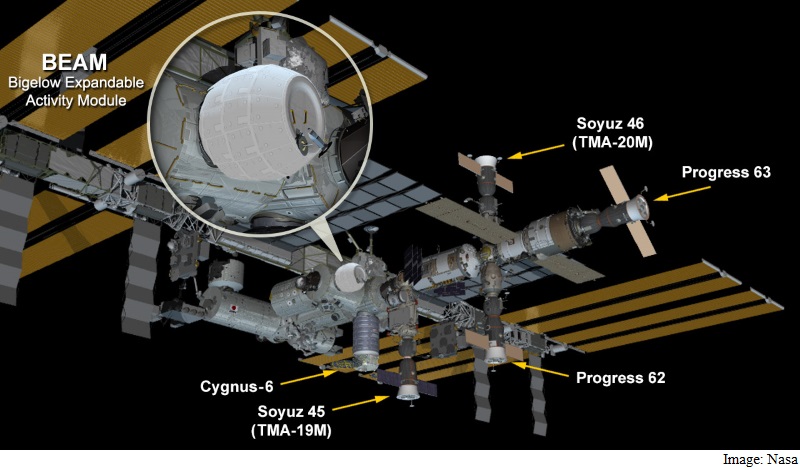
Nasa on Saturday effectively increased and pressurized an upload-on room at the global space Station two days after aborting the first strive while it ran into troubles.
The flexible habitat, called the Bigelow Expandable activity Module (BEAM), finished slowly extending 67 inches (a hundred and seventy centimeters) at 4:10 pm (2010 GMT) following extra than seven hours for the duration of which astronaut Jeff Williams released brief blasts of air into the pod’s walls from the orbiting lab the usage of a manual valve.
After the growth changed into finished, he opened 8 air tanks interior BEAM, pressurizing the pod to a level close to the gap station’s 14.7 kilos per rectangular inch.
“The module is fully expanded at this factor and absolutely pressurized,” Nasa spokesman Daniel Huot stated. “a completely a hit day today with the enlargement of the primary expandable human-rated habitat to ever be flown into space.”
Astronauts will now carry out a series of exams to ensure the pod does no longer leak air and behavior different preparations earlier than getting into it via the station’s Tranquility module for the first time in approximately every week, Nasa said.
The inflation procedure can be higher described as “unfolding” because it takes very little air to convey the pod to full size, experts stated. handiest approximately 0.4 kilos in keeping with square inch (psi) is wanted to extend BEAM to its full shape.
The growth brought on a popping sound no longer not like that of popcorn as the structure slowly crammed out, live video feed from the distance station on Nasa tv confirmed.
Nasa is trying out expandable habitats astronauts may use on the Moon or Mars in the coming a long time.
Efforts to inflate the bendy habitat got beneath way around 9 am (1300 GMT) after the first strive failed on Thursday due to too much friction among the pod wall’s fabrics, probable because it have been left packed longer than in the beginning deliberate.
Astronauts are predicted to re-input the module numerous times a year all through the two–yr era demonstration to retrieve sensor information and determine conditions within the unit, such as how properly it protects in opposition to area radiation, the us space agency said.
Bigelow Aerospace developed the first-of-its-type habitat as a part of an $18 million settlement with Nasa.
fully multiplied, the module is thirteen toes long (4 meters) with the aid of 10.5 toes (three.23 meters) extensive.
Expandable habitats’ benefit lies within the little area they soak up in spacecrafts’ shipment holds even as supplying more dwelling and running area as soon as inflated.
but key questions that remain to be responded consist of how properly such pods might shield people in opposition to sun radiation, debris and the temperature extremes of space.










